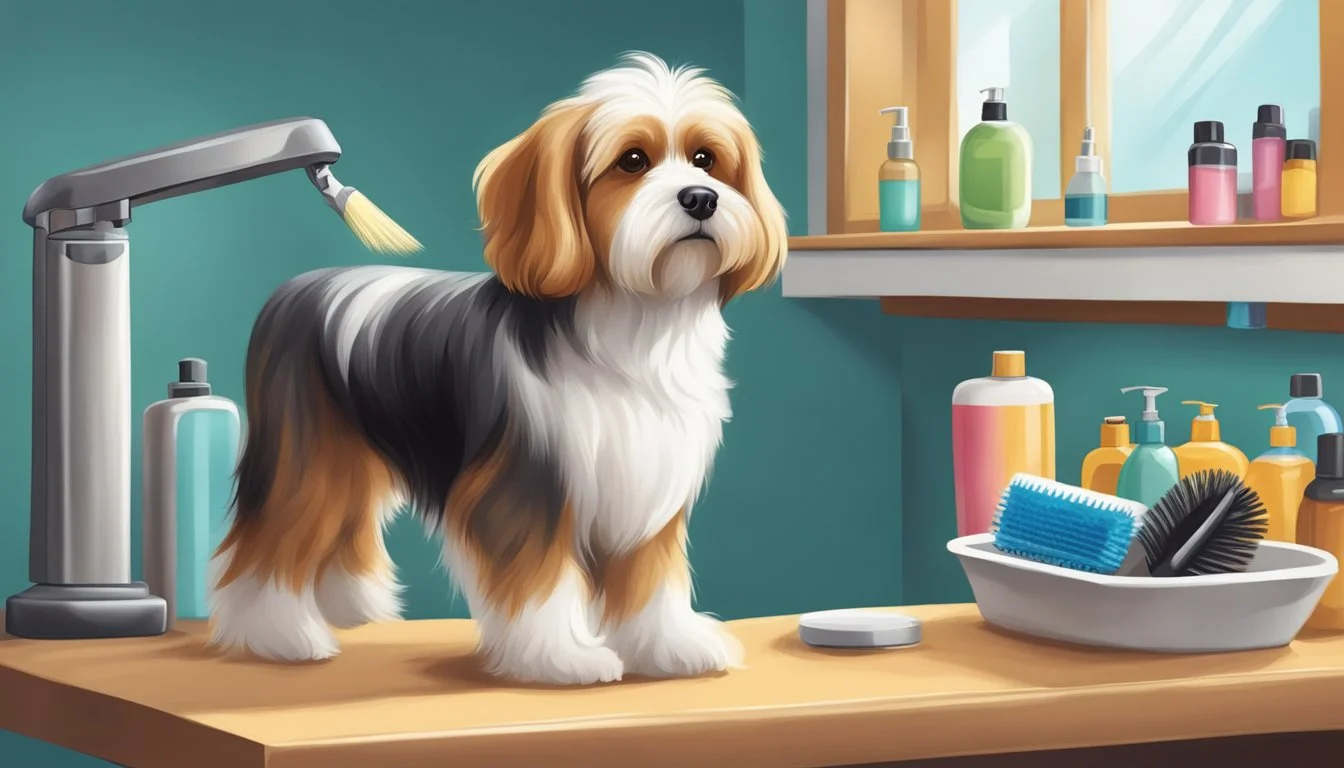Keeping your dog clean and well-groomed is an essential aspect of responsible pet ownership. While most dog owners understand the importance of regular bathing, brushing, and nail trimming, many neglect to pay attention to their dog’s private areas. Neglecting your dog’s private areas can lead to discomfort, infections, and other health complications. In this article, we will discuss the importance of grooming for hygiene and provide tips for keeping your dog’s private areas clean.
Cleaning your dog’s private areas may seem like an uncomfortable or even taboo topic, but it is a crucial part of maintaining your dog’s overall health and well-being. Female dogs, in particular, require regular cleaning to prevent infections and other related problems that can arise in this sensitive area. However, male dogs also require attention to their private areas to prevent discomfort and potential health complications.
In this article, we will provide a step-by-step guide to cleaning your dog’s private areas, including tips for maintaining proper hygiene and preventing infections. We will also discuss the importance of regular grooming for hygiene and provide advice for keeping your dog’s private areas clean and healthy. By following these tips and incorporating them into your regular grooming routine, you can help ensure that your dog stays healthy, comfortable, and happy.
Essentials of Canine Hygiene
As a responsible dog owner, it is essential to maintain proper hygiene for your furry friend. Regular grooming is not just about keeping your dog looking good, but it is also crucial for their overall health. In this section, you will learn about the essentials of canine hygiene, including the importance of regular cleaning, identifying private areas, and the frequency of cleaning for optimal health.
Understanding the Need for Regular Cleaning
Regular cleaning is essential to prevent infections and diseases caused by bacteria, dirt, and other harmful substances. It is crucial to keep your dog’s coat clean and free of mats and tangles. Regular brushing and bathing are essential for maintaining healthy skin and a shiny coat. Cleaning your dog’s ears, teeth, and paws are also crucial for preventing infections and other health issues.
Identifying the Private Areas
Dogs have private areas that require special attention when it comes to grooming. These areas include the anus, genitalia, and underbelly. It is essential to keep these areas clean to prevent infections and other health issues. Cleaning these areas can be done by wiping them with a damp cloth or using a specialized dog cleaning product.
Frequency of Cleaning for Optimal Health
The frequency of cleaning your dog’s private areas depends on various factors, such as breed, age, and activity level. However, it is recommended to clean these areas at least once a week to prevent infections and other health issues. Regular grooming, including brushing, bathing, and cleaning private areas, is essential for maintaining optimal health for your furry friend.
In conclusion, maintaining proper hygiene for your dog is crucial for their overall health and well-being. Regular grooming, including cleaning private areas, is essential to prevent infections and other health issues. By following the guidelines outlined in this section, you can ensure that your furry friend stays healthy and happy.
Grooming Techniques and Best Practices
Selecting the Right Grooming Tools
When it comes to grooming your dog’s private areas, it’s important to choose the right tools for the job. You’ll want to select grooming tools that are specifically designed for sensitive areas, such as a soft-bristled brush or a pair of rounded-tip scissors. Avoid using any harsh or abrasive tools that could cause irritation or discomfort.
Step-by-Step Cleaning Process
Cleaning your dog’s private areas can be a sensitive and delicate process. To ensure that you’re doing it correctly, follow these steps:
- Start by gently wiping the area with a damp cloth or baby wipe.
- Use a mild, fragrance-free soap to clean the area thoroughly.
- Rinse the area with warm water and dry it completely with a clean towel.
- If necessary, trim any excess hair around the area using rounded-tip scissors.
Handling Sensitive Areas with Care
When grooming your dog’s private areas, it’s important to handle them with care. Be gentle and avoid any rough or aggressive movements that could cause discomfort or pain. If your dog seems uncomfortable or anxious, take a break and try again later.
Post-Grooming Skin Care
After grooming your dog’s private areas, it’s important to take care of their skin to prevent any irritation or infection. You can apply a gentle, fragrance-free moisturizer to the area to soothe and protect the skin. Additionally, you may want to consider using a pet-safe powder to help keep the area dry and prevent any moisture buildup.
By following these grooming techniques and best practices, you can keep your dog’s private areas clean and healthy while avoiding any discomfort or irritation.
Frequently Asked Questions
How should I properly clean my female dog’s genital area?
To properly clean your female dog’s genital area, you should use a warm, damp cloth instead of soap or shampoo to avoid any irritation caused by chemicals found in these products. Gently wipe from front to back, being careful not to cause any pain that could further their discomfort. Pay attention to any discharge or odor, which may indicate infection or other health issues that would need veterinary attention.
What is the best method for cleaning a male dog’s private parts?
To clean a male dog’s private parts, use a warm, damp cloth to gently wipe the area. Be sure to clean the area around the penis and scrotum thoroughly, as this area can collect dirt and debris. Pay attention to any discharge or odor, which may indicate infection or other health issues that would need veterinary attention.
Can you explain the steps for a sanitary trim on a dog?
A sanitary trim is a grooming procedure that involves trimming the hair around a dog’s anus and genitals to prevent matting and the accumulation of fecal matter. To perform a sanitary trim, use scissors or clippers to trim the hair around the anus and genitals. Be sure to use caution and avoid cutting the skin. If you are unsure how to perform a sanitary trim, consult a professional groomer or veterinarian.
What are the signs that my dog needs a hygiene cut?
Signs that your dog may need a hygiene cut include matting or tangling of the hair around the anus and genitals, difficulty defecating or urinating, and a foul odor coming from the area. If you notice any of these signs, it may be time for a hygiene cut.
How often should I perform a sanitary trim on my dog?
The frequency of sanitary trims will depend on your dog’s breed, hair type, and lifestyle. Generally, dogs that spend a lot of time outdoors or have long hair will need more frequent trims than those that are primarily indoor pets or have short hair. Consult with a professional groomer or veterinarian to determine the appropriate frequency for your dog.
Are there any special considerations for grooming a dog’s private areas?
When grooming a dog’s private areas, it is important to use caution and avoid causing any pain or discomfort. Be sure to use grooming tools that are appropriate for your dog’s hair type and length. If you are unsure how to properly groom your dog’s private areas, consult with a professional groomer or veterinarian. Additionally, be sure to pay attention to any signs of infection or other health issues that may require veterinary attention.


